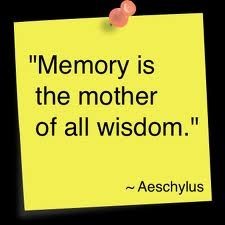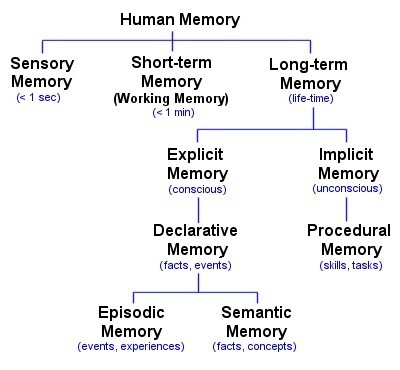Want To Be Successful in Your Life ? Improve Your Memory
When the famous saint, Swami Vivekananda, was living in Chicago, USA, he used to go to the library, borrow large volumes of books, take them home and return them the next day. After some time the librarian became curious and asked him, "Why do you take out so many books when you can't possibly read them all in one day?" Swami Vivekananda replied that he read each and every page of every book. The librarian could not believe it, and so Swami Vivekananda asked her to test him. She opened a book, selected a page and paragraph, and asked him to tell her what was written there. Swami Vivekananda repeated the sentence exactly as it was written in the book, without looking at it. The librarian was astounded and did more tests. Each time Swami Vivekananda repeated the exact words written in the book.
Later the librarian discovered that Swami Vivekananda had a photographic memory. He did not have to read books. His eyes, his mind, would capture the image on the page, and whenever he wished, he could just recall a book, a page, a sentence. That was the capacity of his brain and mind. How did he develop this capacity? He did not have it when he was ordinary Narendra, before he became Swami Vivekananda. His life story tells us that he had many difficulties and problems in his early life. Yet when he started to practise yoga with sincerity, he was able to develop that quality of the brain known as photographic memory.
Exams, memory and concentration
Students often ask how to develop concentration, how to face exams without getting nervous, and how to memorise. One of the faculties of mind is memory, another is intellect and another is understanding. Intellect, memory and understanding are the three faculties that students have to manage. In the past people have thought a lot about how to improve the quality of the body and mind. The yoga techniques were devised in accordance with the natural laws of the body.
Let me share few important techniques with you all :
What is Trataka ?
Trataka is the most effective practice for developing concentration. During exam time, if you do five minutes before you begin your studies, you will find it very useful.
Light a candle and place it so that the flame is at eye level. Look straight at the flame without blinking the eyes for half a minute, or as long as you are able to keep your eyes open. When you feel the need, close your eyes and see the afterimage of the flame in front of the closed eyes. When the after image disappears, the screen in the forehead becomes black. Then open the eyes and again look at the flame without blinking the eyes. Whenever you close your eyes, you will see the afterimage of the flame, and you look at that. You will find that the image moves, it won't remain static. Sometimes it will move up, to the left, to the right, or down, it will keep moving. So you have to make an effort to hold that image fixed at one point and not allow it to move.
Do this for five minutes before going to sleep and before you begin your studies. In a couple of days you will find you are able to memorise and retain whatever you read more easily. This practice develops mental concentration. It is most important for success in studies.
Besides this technique there are other techniques to improve your memory. They are Pranayam and Surya Namaskar. But as the above technique is simple and most effective, I recommend members to follow it rather than getting into complex yogic postures.
The 4 Steps of Memorising : Shravan, Manan, Nididhyas and Sakshatkar
1. Shravan : To listen to a lecture through the ears, is known as Shravan.
2. Manan : Then, after hearing the lecture, to mentally think over it, and to discard parts of the talk which are not needed and to retain the parts of the talk which are useful, is known as Manan.
3. Nididhyas : Then, after having mentally retained the lecture with conviction that it is true, the practice of continuously recalling the lecture day and night is known as Nididhyãs.
4. Sakshatkar : Finally, when that lecture is recalled exactly as it was, with absolute clarity and sincerity, it is known as Sãkshãtkãr.
This step also applies to reading a book.
Thus, by following Tratak and implementing the 4 steps of memorizing, you will develop a very good memory.
Before bidding goodbye, let me remind you about the reason of Swami Vivekananda developing a photographic memory. The sole reason is his following of Brahmacharya i.e vow of celibacy…
Brahmacharya is accompanied with the betterment of all mental faculties. Further to a year of unbroken Brahmacharya, the mind becomes calmer and possessed of much focus and concentration. Veerya (semen) which is transmuted gives sustained mental ability and determination. Memory and grasping power will improve as compared to earlier. The longer one practices Brahmacharya, the better are the results. With every year of progress, the merits become more noticeable. Further to 12 years of honest and unbroken practice with devotion towards God and meditation, ‘Medha Nâdi’ (a special astral energy channel) is formed in the brain which gives photographic memory and an excellent understanding of any subject that the aspirant wishes to know. Celibacy is thus the most direct path to superlative mental faculties…
I hope you liked this article !
Warm Regards,
Veeral Gandhi









 CAclubindia
CAclubindia
